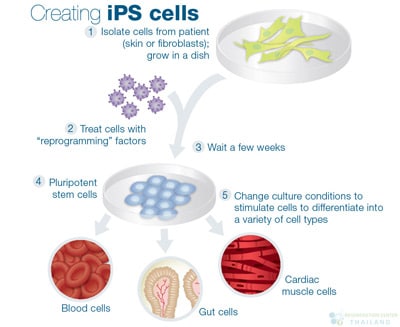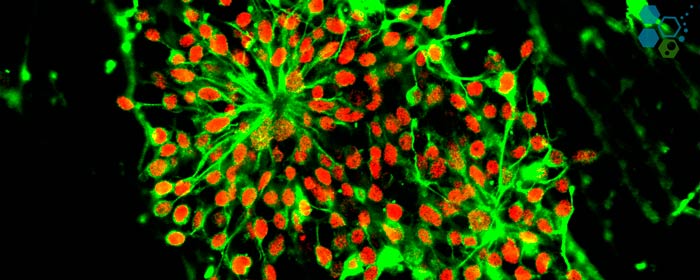Induced pluripotent stem cells or iPS cells are also known as IPSCs are a recent discovery and like STAP cells, have the potential to revolutionise regenerative medicine in the world. The IPS cells are lab created cells with the power to differentiate as great as the embryonic stem cell lines. In 2006, scientists identified four key genes in embryonic stemcells that empowered them to regenerate and differentiate into distinct kinds of somatic cells. Scientists essentially took skin cells and reprogrammed them into iPS cells.[1]
What are iPS Cells?
IPSCs cells share many features with embryonic stem cells. These completely transformed cells can be distinguished from ES cells using SIRT1. SIRT1 also helps ensure the integrity of the genome of stem cells that come from the cell reprogramming procedure. The first human trials of induced pluripotent stem cells took place on six people who had age-related macular degeneration (AMD) . Embryonic cells were induced into pluripotent stem cells using plasmid DNA. An induced pluripotent stem (iPS) cell can be grown from virtually any tissue in any human (old or young) and is genetically altered to behave similar to that of embryonic cells.[2] Induced pluripotent cells (iPS cells) were at one stage “non-pluripotent” cells. Human induced pluripotent stem cells (hiPSCs) and hESCs or human embryonic stem cells for IVF and cryo cell banking were previously the primary sources for mesenchymal cells that were used in regenerative medicine at the regen center of Thailand.

The Basic Types of Stem Cells
Another way to generate embryonic stem cells and induced pluripotent stem cells is from somatic cell nuclear transfer (SCNT).[3] DnA or biological substance must be donated from living donors. Induced Pluripotent Stem Cells or iPSCs are converted into adult cells through genetic engineering techniques that introduce pluripotent genes into the adult cells to be used for neurodegenerative illnesses like ALS,Brain Injuries, Ataxia disease and Spinal cord damage and in treating heart disease and CHF therapy.
Published Clinical Citations
[1] ^ Noisa, Parinya, Carina Lund, Kartiek Kanduri, Riikka Lund, Harri Lähdesmäki, Riitta Lahesmaa, Karolina Lundin, et al. 2014. Notch signaling regulates the differentiation of neural crest from human pluripotent stem cells. Journal of cell science, no. Pt 9 (February 25). doi:10.1242/jcs.145755. https://www.ncbi.nlm.nih.gov/pubmed/24569875
[2] ^ Prè, Deborah, Michael W Nestor, Andrew A Sproul, Samson Jacob, Peter Koppensteiner, Vorapin Chinchalongporn, Matthew Zimmer, Ai Yamamoto, Scott A Noggle, and Ottavio Arancio. 2014. A time course analysis of the electrophysiological properties of neurons differentiated from human induced pluripotent stem cells (iPSCs). PloS one, no. 7 (July 29). doi:10.1371/journal.pone.0103418. https://www.ncbi.nlm.nih.gov/pubmed/25072157
[3] ^ Tubsuwan, Alisa, Soumeya Abed, Annette Deichmann, Melanie D Kardel, Cynthia Bartholomä, Alice Cheung, Olivier Negre, et al. 2013. Parallel assessment of globin lentiviral transfer in induced pluripotent stem cells and adult hematopoietic stem cells derived from the same transplanted β-thalassemia patient. Stem cells (Dayton, Ohio), no. 9. doi:10.1002/stem.1436. https://www.ncbi.nlm.nih.gov/pubmed/23712774

